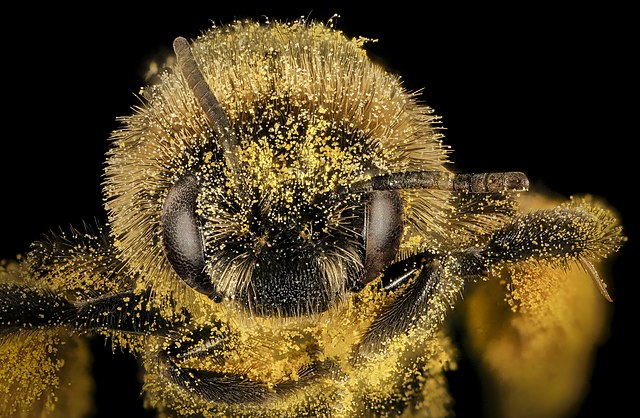Ornithophily or bird pollination is the pollination of flowering plants by birds. This sometimes coevolutionary association is derived from insect pollination (entomophily) and is particularly well developed in some parts of the world, especially in the tropics, Southern Africa, and on some island chains. The association involves several distinctive plant adaptations forming a "pollination syndrome". The plants typically have colourful, often red, flowers with long tubular structures holding ample nectar and orientations of the stamen and stigma that ensure contact with the pollinator. Birds involved in ornithophily tend to be specialist nectarivores with brushy tongues and long bills, that are either capable of hovering flight or light enough to perch on the flower structures.
Hummingbird Phaethornis longirostris on an Etlingera inflorescence
A lesser violetear
Inflorescences of Butea allow birds to perch on the stalk
Ruby-throated hummingbird (Archilochus colubris) at scarlet beebalm flowers (Monarda didyma)
Pollination is the transfer of pollen from an anther of a plant to the stigma of a plant, later enabling fertilisation and the production of seeds. Pollinating agents can be animals such as insects, for example beetles or butterflies; birds, and bats; water; wind; and even plants themselves. Pollinating animals travel from plant to plant carrying pollen on their bodies in a vital interaction that allows the transfer of genetic material critical to the reproductive system of most flowering plants. When self-pollination occurs within a closed flower. Pollination often occurs within a species. When pollination occurs between species, it can produce hybrid offspring in nature and in plant breeding work.
Female carpenter bee with pollen collected from a night-blooming cereus
Hummingbirds typically feed on red flowers
A bee (Mellisodes desponsus) covered in pollen
Hind leg of a honey bee with pollen pellet stuck on the pollen basket or corbicula. When the worker bee is collecting pollen, their legs make the transfer of pollen from the inner basitarsal combs to the outer pollen basket (shown in figure).








